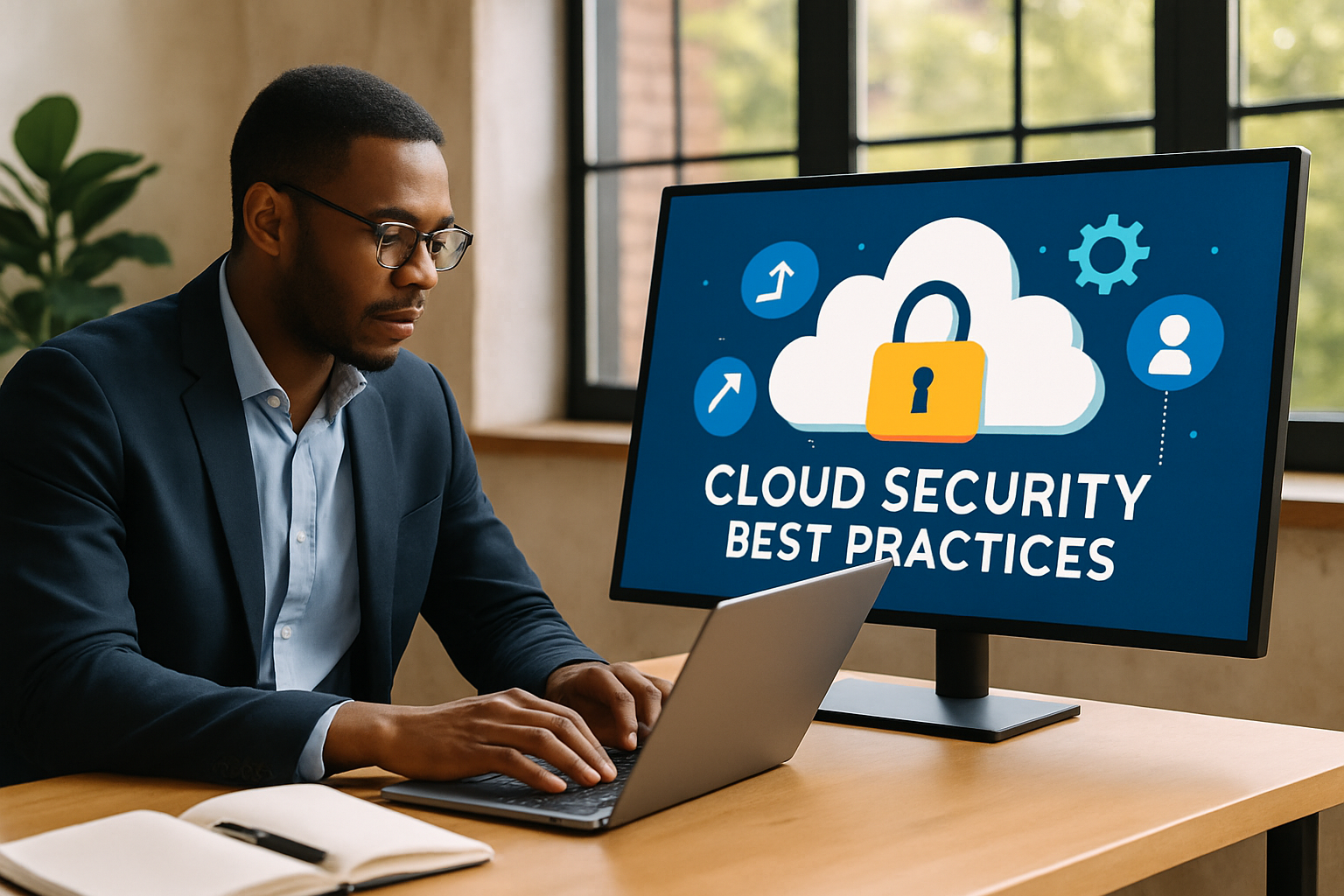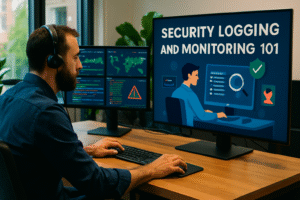
Cloud security best practices
Cloud computing has redefined how organizations store, process, and access data. The convenience, flexibility, and scalability of cloud platforms have unlocked new opportunities for businesses and individuals worldwide. However, as reliance on the cloud grows, so does the complexity and significance of security. Achieving robust cloud security is an ongoing, multidisciplinary process, involving technology, processes, and people.
Understanding Cloud Security Fundamentals
Before diving into best practices, it’s crucial to understand what makes cloud security distinct. Unlike traditional on-premises infrastructure, cloud environments operate on a shared responsibility model. This means that cloud service providers (CSPs) and customers share different aspects of security obligations. For example, CSPs are typically responsible for the security of the cloud itself—the physical servers, networking, and foundational software—while customers are responsible for securing what they put into the cloud: data, applications, access controls, and more.
Cloud security is not a one-time implementation, but a continuous process of assessment, improvement, and adaptation.
The Shared Responsibility Model: Know Your Role
A common pitfall in cloud adoption is misinterpreting the shared responsibility model. Each cloud deployment—Infrastructure as a Service (IaaS), Platform as a Service (PaaS), and Software as a Service (SaaS)—assigns different security duties to the customer and provider. For example, with IaaS, you manage your data, applications, operating systems, and network configurations, while the provider manages the virtualization, servers, storage, and networking. In SaaS, providers assume more responsibility, but you still need to manage user access and data integrity.
It’s essential to clearly define responsibilities within your organization and with your CSP. This clarity helps prevent gaps that attackers could exploit.
Identity and Access Management (IAM): The First Line of Defense
Identity and Access Management (IAM) is pivotal in cloud security. IAM controls who can access resources and what actions they can perform. Poorly configured IAM is a leading cause of cloud breaches.
Principle of Least Privilege
Apply the principle of least privilege (PoLP) by granting users and applications only the permissions they absolutely need—nothing more. Regularly review and remove unnecessary privileges.
For example, if an engineer needs temporary access for troubleshooting, grant time-bound permissions instead of permanent elevated access. Most cloud platforms (AWS, Azure, Google Cloud) support policies that help automate such restrictions.
Multi-Factor Authentication (MFA)
Enforce multi-factor authentication for all accounts, especially those with administrative privileges. MFA adds a critical layer of protection against compromised credentials.
Role-Based Access Control (RBAC)
Implement role-based access control to group users based on job functions and assign permissions accordingly, rather than on an individual basis. This approach simplifies management and reduces the risk of privilege creep.
Data Protection in the Cloud
Safeguarding data is at the heart of cloud security. This includes data at rest, in transit, and in use.
Encryption Everywhere
Encrypt all sensitive data, both at rest and in transit. Most CSPs offer built-in encryption features, but it’s your responsibility to ensure they are properly configured. Use strong, industry-standard encryption algorithms and manage your encryption keys securely.
For highly sensitive workloads, consider bring-your-own-key (BYOK) or even hold-your-own-key (HYOK) models, where you control the encryption keys instead of the provider.
Data Backup and Recovery
Regularly back up your data and test restoration procedures. Cloud environments offer automated backup options, but you must verify backups are consistent, complete, and stored securely—preferably in different regions or even across providers.
A backup is only as good as your ability to restore it. Regular drills are essential.
Data Residency and Compliance
Understand where your data resides and the regulatory implications (GDPR, HIPAA, etc.). Some industries require data to remain within specific geographic locations. Use geo-fencing and region selection features to comply with data residency requirements.
Network Security: Building a Secure Perimeter in the Cloud
Unlike traditional networks, cloud environments are dynamic and ephemeral. Network security strategies must adapt accordingly.
Microsegmentation and Zero Trust
Adopt a microsegmentation strategy—divide your cloud network into isolated segments to limit lateral movement if an attacker gains access. Combine this with a zero trust approach: never trust, always verify, regardless of whether a user or device is inside or outside your network perimeter.
Firewalls and Security Groups
Leverage cloud-native firewalls and security groups to control inbound and outbound traffic. Define rules as narrowly as possible, and review them frequently. Avoid using broad rules like “allow all from any IP.”
Private Connectivity
For sensitive applications, use private endpoints or virtual private networks (VPNs) to isolate traffic from the public internet.
Continuous Monitoring and Threat Detection
Cloud environments are not static—resources are created and destroyed, configurations change, and new threats emerge constantly. Continuous monitoring is vital.
Automated Security Tools
Deploy cloud-native security tools such as AWS GuardDuty, Azure Security Center, or Google Security Command Center. These tools provide real-time threat detection, vulnerability scanning, and compliance monitoring.
Log Everything
Enable comprehensive logging for all cloud resources. Store logs in a secure, tamper-proof location. Use Security Information and Event Management (SIEM) solutions to aggregate and analyze logs for suspicious activity.
Visibility is the foundation of effective cloud security. If you can’t see it, you can’t secure it.
Secure Application Development in the Cloud
Developing applications for the cloud requires a security-first mindset.
DevSecOps: Embedding Security into the Pipeline
Integrate security practices into your development process—DevSecOps—rather than treating security as an afterthought. Automate security testing (static and dynamic analysis) in your CI/CD pipelines. Check for vulnerabilities in third-party libraries and dependencies.
Secrets Management
Never hardcode credentials, API keys, or secrets in your application code or repositories. Use dedicated secrets management services provided by your cloud provider or third parties, and restrict access to secrets on a need-to-know basis.
Human Factors and Security Awareness
Technology can only go so far—people remain both the strongest and weakest link in cloud security.
Security Awareness Training
Regularly train all users—engineers, managers, and support staff—on cloud security risks such as phishing, social engineering, and credential theft. Use real-world scenarios and hands-on exercises to reinforce learning.
Inclusive Security Practices
Design security processes and training to be inclusive and accessible to all team members, including neurodivergent individuals. Provide materials in multiple formats, offer extra support where needed, and foster an environment where everyone feels comfortable asking questions about security.
A secure culture is built on empathy, collaboration, and respect for diverse perspectives.
Incident Response in the Cloud
Preparation for security incidents is as important as prevention.
Cloud-Specific Response Plans
Develop and regularly update incident response plans tailored to your cloud environment. Include clear roles, communication protocols, and steps for evidence collection and mitigation. Practice tabletop exercises that mimic real-world cloud attack scenarios.
Leverage Automation
Automate initial response actions—such as isolating compromised resources or triggering alerts—to reduce response times and limit damage.
Staying Ahead: The Evolving Nature of Cloud Security
Cloud security is a moving target. As technologies evolve—serverless computing, artificial intelligence, edge computing—so do attack surfaces and adversarial tactics. Stay informed through continuous learning, participation in professional communities, and regular reviews of your security posture.
Security is a journey, not a destination. Continuous improvement is the only way forward in the cloud.
Embracing best practices in cloud security requires diligence, adaptability, and a willingness to learn. Whether you’re a technology leader, developer, or aspiring professional, your attention to detail and commitment to security will help build a safer, more resilient digital world for everyone—including those who have historically been underrepresented or underserved in technology. And remember: every layer of security you add is a step toward empowering yourself and your community.


